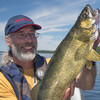Wild Game Venison for the Home Smoker

Autumn’s generous embrace is one of the main things that hold sportsmen in Northern Ontario. The land becomes crisp and golden, the temperature and leaves are falling, and birds, fish, and animals are on the move. Salmon and steelhead hit the rivers, and open season for moose, deer, and wildfowl gives us the opportunity to feed on some of the best meat, fish, and fowl available. There is no shortage of ways to prepare for fall’s harvest, but there’s something about the sight and smell of a smokehouse, wafting aromatic clouds into the crisp air, that makes the salivation process begin.
Recipes and methods of turning meat, fish, and fowl into delicacies vary considerably. And with the abundance of raw materials, autumn is a great time to explore the versatility of the home smoker. One of the traditional favorites that emerge from my smoker is homemade pastrami made from venison. Deer roasts are cured in a brine and then cooked in a smoker. Sliced thin with crackers or piled high on a sandwich, venison pastrami doesn’t last long.

THE SMOKER
One of the key ingredients to smoking any meat or fish is a smoker. There are many commercial models on the market that work quite well, and many more homemade smokers crafted from anything from old refrigerators to metal garbage cans. Any contraption that will maintain an atmosphere of smoke at a consistent temperature for a long period of time will do. The ability to control the temperature is one of the most important functions of any smoker.
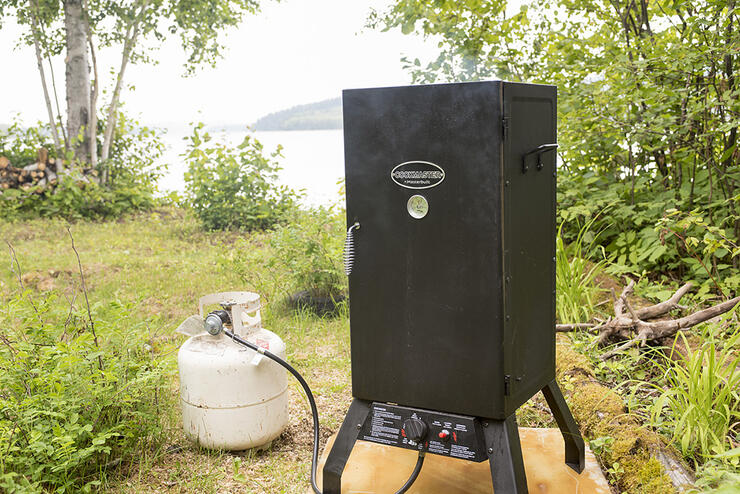
I have a smoker made from two horizontal stainless steel barrels. The fire is contained in the bottom barrel, where a tight-fitting door and adjustable draft control the temperature of the fire. The top barrel is connected to the bottom barrel with a short-length of stovepipe, allowing the heat and smoke to circulate through the smoking chamber.
Although I prefer using a smoldering hardwood fire, one of the simplest and most popular ways of producing heat and smoke is placing wood chips in a pan over a propane burner. I also have a propane-fired commercial smoker that I’ve been using more and more lately for its ease of use, and the results have been great.
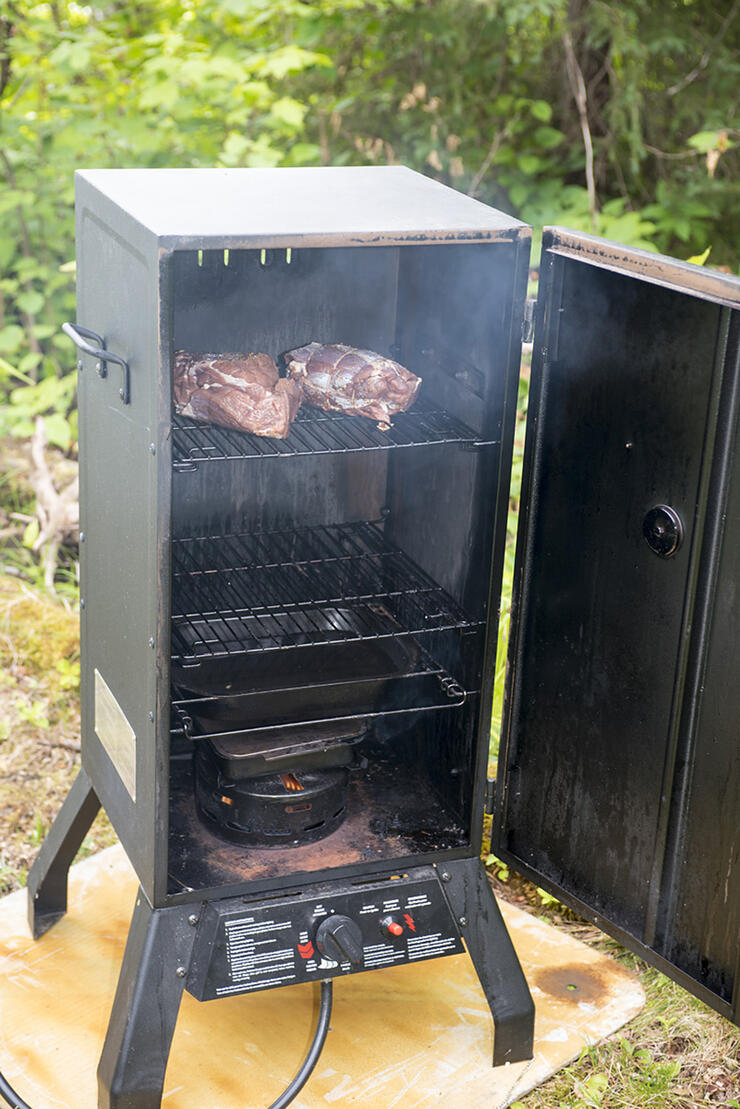
Whichever way you decide to create your smoke and heat, the type of wood you use has a great influence on the flavour and aroma of the final product. Never use evergreen, unless the idea of spruce-flavoured meat or fish appeals to you. For best results, stick to hardwood and fruitwoods. Sugar maple is pretty hard to beat, as is birch once the bark is removed.
PASTRAMI
Many people shy away from smoking meat. Red meat requires a longer time to cure in the brine but is no more difficult to process than fish. Use venison to make your own pastrami and you may never visit the delicatessen again.
Start with a slab of deer around three or four inches thick. The following brine will do for five or six pounds of meat:
2 quarts of water
1 teaspoon saltpeter or commercial curing salt
3/4 cup salt
3 cloves garlic, crushed
1/2 cup of white sugar
1 tablespoon dry ginger (4 tbs fresh ginger )
1/2 teaspoon ground cloves
1 teaspoon black pepper
1 tablespoon crushed coriander
Mix in a plastic container. Submerge meat and keep it in the refrigerator for seven days, turning it every two days.
Remove from brine and place the meat on a rack in the refrigerator to dry for 24 hours. A newspaper placed underneath will catch any drips.
Smoke at 40 C (100 F) or less for 2 hours. Then increase the temperature to 120 C (250 F) for 2 to 3 hours.
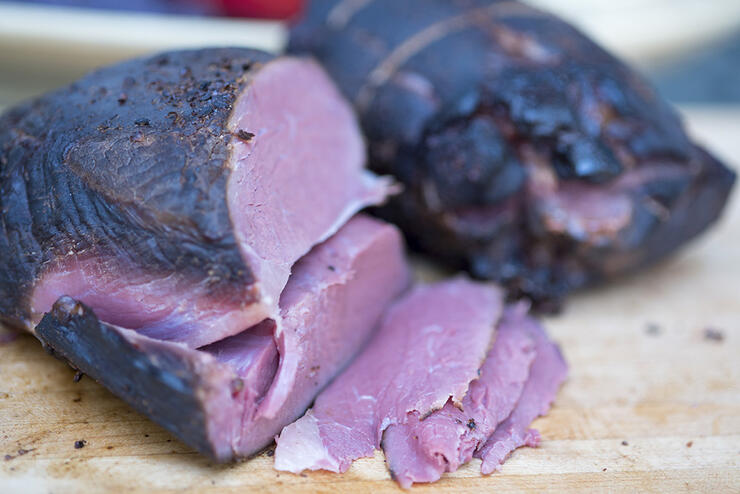
Venison pastrami is good hot out of the smoker but gets even better after mellowing a day or two in the refrigerator.
The home smoker is a versatile cooking tool. Used in concert with the North’s wild meat, it is the key to creating delicacies that simply aren't available anywhere but in your own backyard.
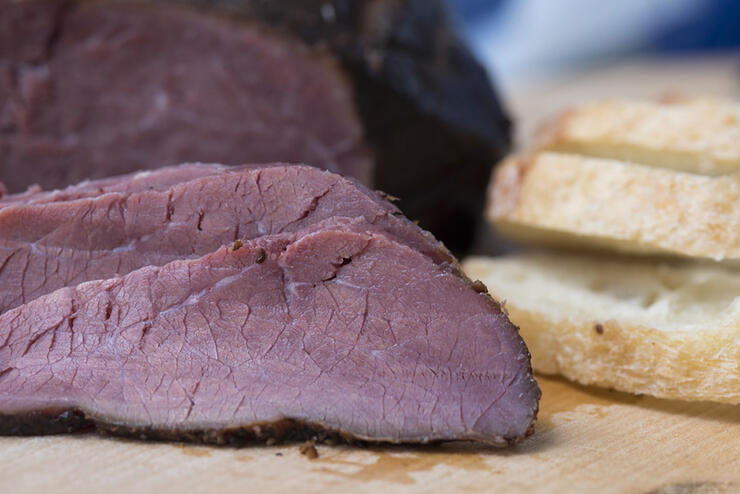
Recommended Articles
Grouse Hunting at Birch Dale Lodge
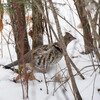
Snow Hunt for Grouse
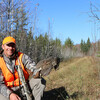
Grouse Hunting in Sunset Country

Chasing Gobblers

Crossing the Border into Canada

A Duck Hunting Bonanza
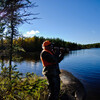
Fly-In Moose
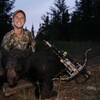
Hunting With Friends
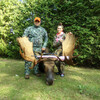
Ontario's Largest Moose by a Female

Big Water Diver Duck Hunt

Becoming a Trapper

The Rut and Rifle: Hunting White-Tailed Deer in Bruce County

Trophy Deer Hunts in Thunder Bay

Ontario's Deer mecca
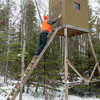
Bonny Bay Bucks
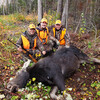
Techniques for an Ontario Moose Hunt

Northwest Deer

Stalking Late Bucks
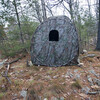
Ground Blind Hunting



